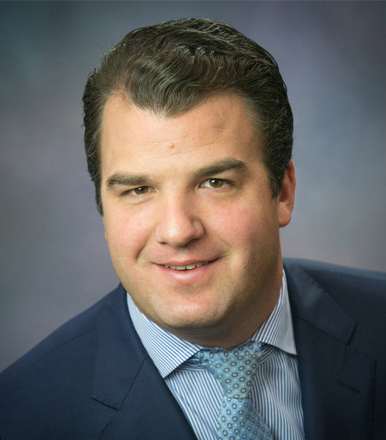Whether you have just welcomed your first child into the world or your child is a sophomore in high school, it is crucial to have a college plan in place. Every


family is different and college planning is not a one size fits all type of deal. But having a process-driven college plan and following some guidelines will prevent you from making decisions that will ultimately hurt your chances of receiving financial aid.
PLANNING
The first step one should take when they have a child is to develop a plan. Parents should be honest with themselves and evaluate their financial capabilities, because as with all aspects of finance, it is important to have a budget. Being aware of how much they have and how much they spend will help families plan and know realistically how much they can save each month for college without risking the necessities. It is vital in planning
for college savings to not forget about other financial matters. In most cases, clients should max out their 401(k) contributions before putting money into a college savings account. It is a lot easier to get a loan from the government or a private bank when you are working to help fund your child”™s college than to
help fund your retirement.
SAVING
One of the keys to saving is starting early and often. By starting early, you get to see the effect of compounding interest and will start to see your assets grow over time. It is important to create a savings plan and to stick with it throughout the years. Once you set an amount to save, automatic contributions are a great way to ensure you stick to your plan. As your financial picture improves, whether it be a promotion, new job or inheritance, revisit your savings plan and earmark more for college. Make sure to keep in mind that financial aid offices will look
at how much money you made in the years leading up to your child”™s freshman year.
Where you put your money is also important. Consider using tax-friendly accounts, like 529 College Savings Accounts, which is a plan operated by a state or educational institution and offers tax advantages and potentially other incentives to make it easier to save for college and other post-secondary training for a designated beneficiary, such as a child or grandchild. The impact of taxes should also be taken into consideration when you are investing your money. Make sure the plan you choose has low-cost investment options. Some states do offer deductions or tax credits for contributions; however, some state plans have more fees than others. Ask yourself and your financial planner or accountant this question: In the long term is the tax deduction or credit better than the cheaper plan? In some cases, out-of-state plans have cheaper internal expenses and fees making them a better option than using your home state”™s plan for the credit. If you are earmarking a taxable account to help pay for your child”™s college, it is recommended that you are in low cost, liquid and transparent investment vehicles.
APPLYING
Typically, during the sophomore year of high school is when parents and students start looking at colleges. Most families take into consideration major, location, academics, accommodations, but many parents overlook the financial component of this stage of life, sometimes until
it is too late.
When applying for schools most students have a “reach” and a “safety school” in regard to academics and admission. This strategy should also be used for a school the family can afford and would
like to have their child attend. Unfortunately, there is very little you can do to save for college when you are that late in the game and a lot of parents want their kids to go to schools they get in to but can”™t afford the tuition and room and board costs. The result of this is picking up too much debt, altering spending and lifestyle and working longer. Parents should work with a financial adviser/college planner to come up with a “safety number,” which takes into consideration how much they can spend and how much debt
is safe to take.
Parents spend a substantial amount of time and money helping their kids prepare to get into a good school, through the costs of SAT tutors, athletic camps, travel teams, clubs, among other extracurricular
activities. Parents should also be investing time and money into building a plan and working with a financial
adviser who can help them create a tailored college plan.
PAYING
Regardless of how much money you have saved, it is important to understand the role financial aid will play in a child”™s education. The process of applying for need-based financial aid for college begins by students and parents completing one or two financial aid forms, the Free Application for Federal Student Aid (FAFSA) and/or the CSS Profile. There are some drastic differences between how each form calculates aid to be given. One example, the CSS profile counts the equity you have in your home and privately held businesses with under 100 employees as potential assets to pay for college while FAFSA does not. The CSS profile takes a closer look at your finances because they are giving away private money, not federal money from FAFSA. As common practice when filling out financial information, less is more, don”™t over estimate.
When schools begin sending offer letters, don”™t settle. Share offers with the other schools your child applied to. Sometimes a call to the financial aid office to explain your financial situation can help get you more aid. Especially in cases where a student is gifted in academics, music or even athletics.
There is only one universal truth when it comes to paying for college and that is: families with a detailed college plan fair better than those without one. It is not often that families file for bankruptcy because of college tuition, but many times parent”™s retirement plans are delayed or not fulfilled. Besides the purchase of your first home, paying for college is going to be one of the biggest expenses a family will face and it is crucial that families start saving and planning early.
Sean Flynn is a financial adviser at Essex Financial in Southport. Prior to joining Essex Financial, he worked as a financial adviser at Apella Capital, a registered investment adviser in Connecticut. A Fairfield University graduate, Flynn has a Bachelor of Science degree in finance from the Dolan School of Business. He is also a certified college planning specialist through the National Institute of Certified College Planners. He can be reached at Sflynn@essex.financial.




















When Sean says 529 plans are operated by states and educational institutions, the only non-state plan in operation is Private College 529. I am president of this Plan, a non-profit organization owned by nearly 300 private colleges and universities nationwide, including nearby schools like Fairfield University, Sarah Lawrence, Pace, Wesleyan, Trinity and more. Families pay today’s prices for tomorrow’s tuition, which the participating schools guarantee.They can potentially save thousands of dollars on the cost of college. And there are no fees. It is a good option for families that want to have the option of private higher education for their children or grandchildren.